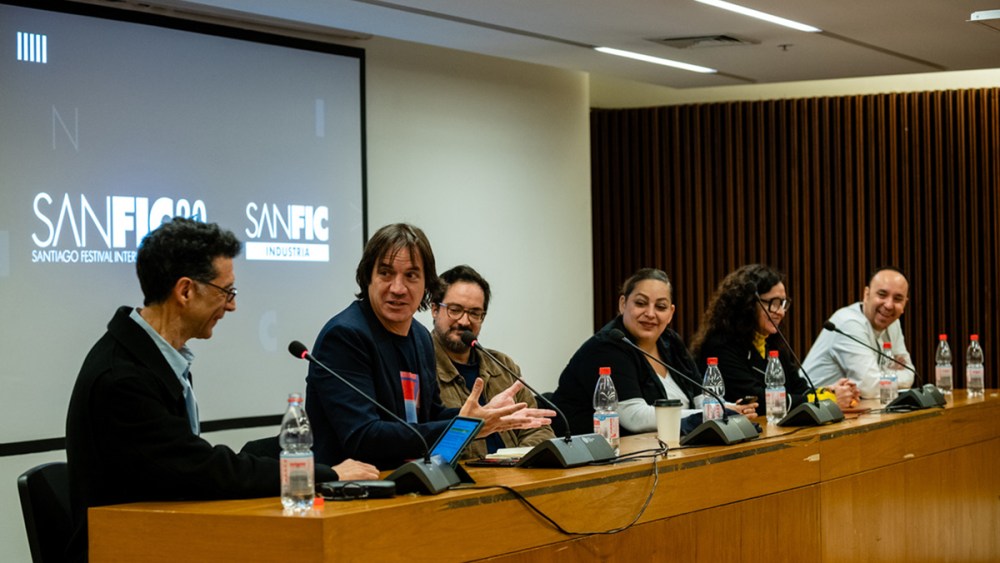Tribeca, Guadalajara, Tallinn, Rio, Sanfic Execs Set Festival Roadmap
SANTIAGO, Chile — This is the age of turbulence and film festivals are not immune. Decimated in many cases by public-sector cuts or COVID-19, they haven’t stopped evolving after the pandemic as they hone new priorities, react to both a sometimes volatile political context and the state of cinemagoing worldwide if a round table at Chile’s Sanfic Industria last week, titled Film Festivals’ Present and Future, was anything to go by.
Panel speakers took in honchos at three top Latin American events – Sanfic artistic director Carlos Nuñez, Rio de Janeiro Film Festival director Ilda Santiago and Estrella Araiza, managing director of Mexico’s Guadalajara Festival.
Panellists also included reps at two fests notable for the presence of Latin American movies: José F. Rodríguez, senior programmer at Tribeca, which regularly awards movies from the region such as Uruguay’s “Don’t Let Me Go” this year, and Javier García Puerto, a programmer at Tallinn’s Black Nights Film Festival. Both screen stereotype-bucking Spanish-language movies, such as Tribeca winner “Huesera” from Michelle Garza and Agustin Toscano’s “I Trust You,” a 2023 Tallinn Rebels With a Cause best director laureate.
Following, five takeaways from the panel, moderated by LatAm Cinema’s Gerardo Michelin. Observations made at the round table will resonate with many events around the world.
An Ever Evolving New Normal
Two cases in point. Post-March 2020 the Tribeca Film Institute suspended indefinitely its funding lines. In 2021, the Tribeca festival moved from mid-March to early June which, as Rodríguez recognized at Sanfic, has been a “roller coaster.” It is now in conversations to open up its industry activities with a WIP showcase curated by financiers and distributors and an industry week of panels and meetings. At the Rio Festival, 20 years ago, Brazil was “a long way from the rest of Latin America,” said Santiago. Now, and in part because of increasing co-production, Rio can “see the possibility of attracting young audiences who attend to see Latin American films,” added Santiago, in Chile for the first time to catch movies.
Festivals, Markets: A Vital Launchpad
Latin America’s top four markets – Mexico, Brazil, Argentina, Colombia – and Chile released together 600 films last year, just 3% down on 2019, according to Marché du Film “Focus” reports.
Yet, at $1.72 billion, 2023’s five-country combined box office was still 21% on 2019.
So, facing a contracted market, visibility is ever more of a necessity for films. Festivals or markets are, moreover, one of the only ways to achieve that. But strait is the gate. At the Edinburgh TV Festival on Tuesday, panelists largely concurred that were too many titles chasing diminished broadcaster commissions. The same consensus largely emerged at Sanfic. “We have ever less public, less theatres, less distribution, for whom are we producing more, and why and what does it serve?” Rio’s Santiago asked.
The consequences of hyper-production in a contracted market played out throughout the panel debate.
No Cannes, Venice Reduxes: A Larger Focus on Local, Regional Fare
“You could create a festival just from titles premiering at Berlin and Toronto,” Santiago observed. But she won’t be doing anything of the kind. Both Rio and Sanfic tap vital public sector funding. Guadalajara draws down federal, Jalisco region and municipal funding, said Araiza. Meanwhile, with more ambitious productions often still whammied by the pandemic, local pic market shares in Argentina, Brazil, Chile, Colombia and Mexico stood in 2023 at 7.6%, 3.2%, 3.1%, 1.2% and 4%, according to “Focus.” Hardly surprisingly, one of the biggest imperatives of all three Latin American events is to showcase homegrown fare. “The role [that festivals have] as a launch-pad for local, Latin and Ibero-American talent is super important for us,” said Nuñez. Santiago and Araiza agreed.
Fewer Films
Raising films’ visibility again has knock-on consequences. “We believe in generating an event, not just going to see a film but also a performance or a conversation with Paul McCartney, David Fincher or Steven Soderbergh,” said Tribeca’s Rodríguez. Festivals are also dropping the number of films they show. Guadalajara screened 194 films this June. “We’ll never get back to the numbers of films we had before the pandemic,” said Arailza. “We could have 50, 60 more films, but we’re interested in giving a visibility to each film,” Nuñez adds. Santiago agreed. She used to program 400 films, now screens 200. At the Tallinn Black Nights Festival, “we used to screen 400 films before the pandemic. Now, including shorts, we’re at around 300, 200 of which are features,” said García Puerto.
Festivals Focus on Audiences
Festivals are also highly focused on their films reaching audiences, especially a newer generation of cinemagoers. Part of that is a cultural imperative: to acquaint young spectators before they’re lost to YouTube. But as young audiences lead the box office rebound worldwide, they ae also making up ever more of festival crowds. “There are a lot of young people, 20-30s, who are coming back to theatres. The 30s-50s are still a little-bit stay-at homes, which could be because they got used to watching streamers during the pandemic but we think we’ll get them back,” said Nuñez, who added that attendance is creeping up at Sanfic, now around 40,000. The question is what festivals serve for, observed García Puerto. “Why do we speak so much about co-production funds and we don’t talk about distribution funds? How many films can you produce which are never seen? We should make more workshops about the creation of publics, not the creation of films,” he added.


